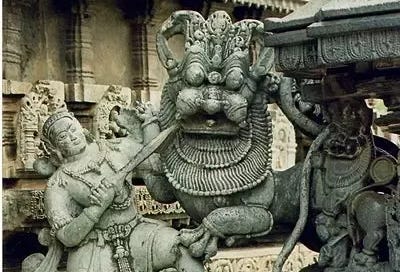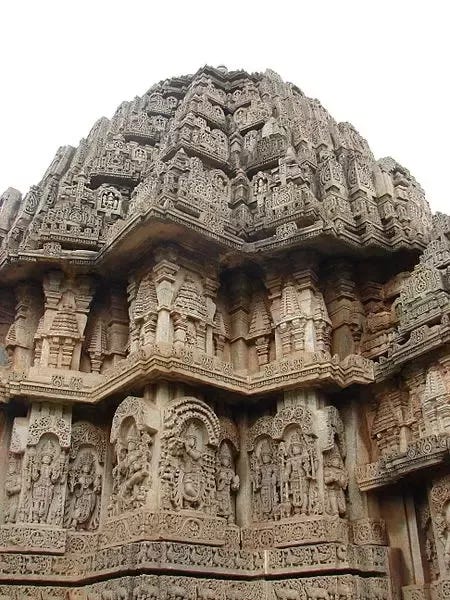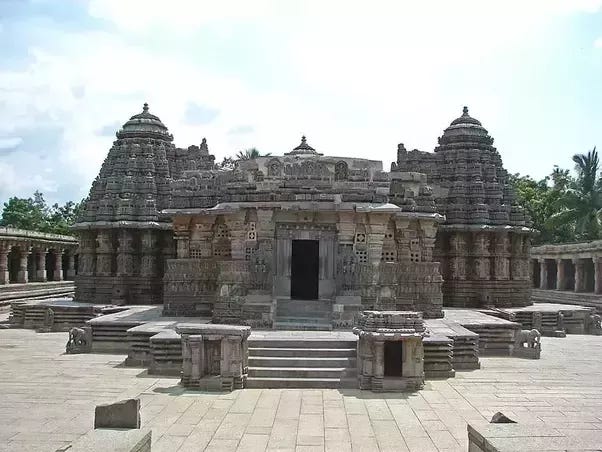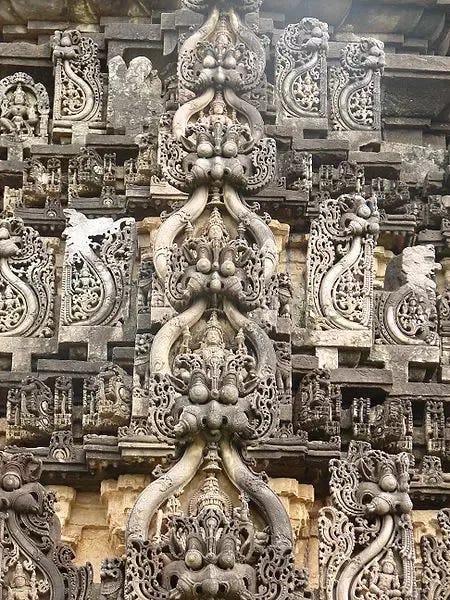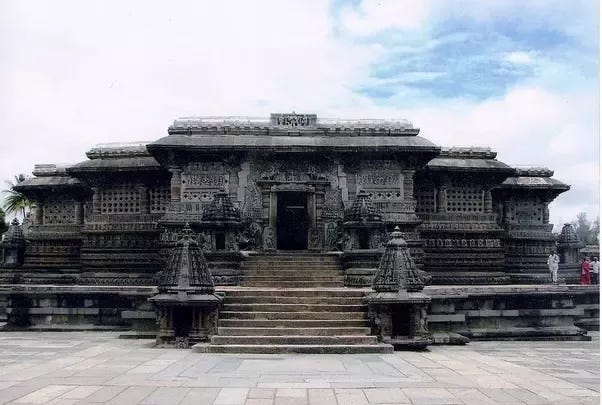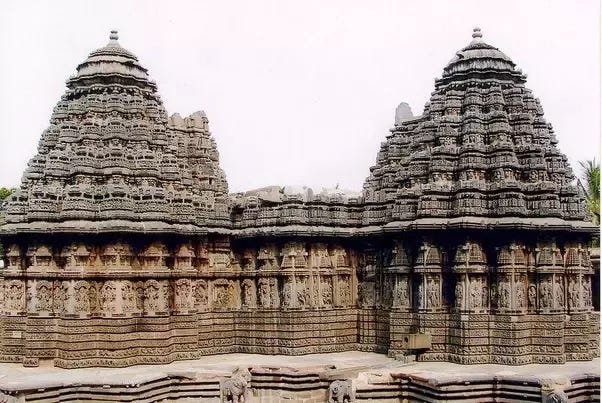Very much like the Cholas in Tamil Nadu, the Hoysalas left their own unmistakable imprint on Karnataka, be it the culture, the architecture, the literature or religion of the state.
Like most of the ancient empires, the origin of the Hoysala's had it's own legend, deriving from a tale of a lion being struck down by a young man Sala, to save his Jain guru Sudatta. The name of the dynasty comes from the Kannada word for strike( Hoy) and Sala, and this incident was also the emblem of the empire( as shown in the above picture). As per historical accounts though, Arekalla was the first chieftain in 950 A.D. It was under Vishnuvardhana, that the Hoysalas emerged as a mighty kingdom, and he also moved the capital to Halebidu.
Architecture
Like most other empires down South, one of the stellar contributions by the Hoysalas was in the field of architecture. The Hoysala temples were usually dedicated to Lord Vishnu or Shiva, and what stood out was their very unique architecture. The difference between the temples in Hoysala empire, and those in the Pallava, Chola empires, was that in the former, you had different parts of the temple merging into a unified whole, while in the latter, each part of the temple was distinct by itself. They used soapstone in the construction of temples, which was a good material for intricate carvings, and that accounts for the profusion of sculptures on the walls too. Some of the main features in their architecture.
Star shaped Vimana
Mantapa with an ornate ceiling
Star Shaped Raised platform.
Intricate Sculptures
Some of the wonderful temples built during the reign.
Chennakesava Temple at Belur
Hoysaleswara Temple at Halebidu
Kesava Temple, Somnathpura
Literature
The Hoysala empire witnessed the emergence of Kannada literature, grammar, and there was more royal patronage of Kannada scholars. While the Champu style was the accepted norm, more and more distinctive Kannada metres came to be accepted. You had the Sangatya metre for compositions, the Shatpadi, Tripadi for verses, and lyrical poems called Ragale. Janna, a Jain scholar wrote Yashodaracharite, about a king who gives up human sacrifice, while Rudrabhatta wrote Jagannatha Vijaya, in the old Champu style, relating to his battle with Banasura. Another great writer Harihara, wrote the Girija Kalyana, describing the marriage of Lord Shiva with Parvati, using the old Champu style. The philosopher Madhvacharya existed during this period, and he composed the Righabhashya on the Brahmasutras, a canonical text in Vedanta school.
Language
Kannada language developed and rose to prominence during the Hoysala period, displacing Sanskrit as court language too. The writings on poetry, grammar, lexicon, prose fiction were in Sanskrit, while the Silasasanas( stone inscriptions) and Tamarasasana( Copper inscriptions) were entirely in Kannada.

